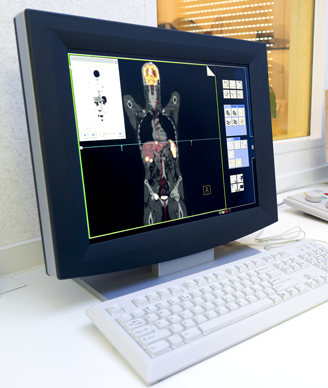No Radiotherapy After Negative PET in Early-Stage Hodgkin Lymphoma
Patients with early-stage Hodgkin lymphoma who have a negative PET finding after 3 cycles of chemotherapy have a good prognosis without undergoing radiotherapy.
Image © ballemans / Shutterstock.com

Patients with early-stage Hodgkin lymphoma who have a negative positron emission tomography (PET) finding after undergoing 3 cycles of chemotherapy with doxorubicin, bleomycin, vinblastine, and dacarbazine (ABVD) have an excellent prognosis without undergoing any further treatment with radiotherapy, according to the results of the RAPID trial published in the New England Journal of Medicine.
“Although the noninferiority margin was exceeded in this study, the results suggest that radiotherapy can be avoided for patients with negative PET findings,” wrote John Radford, MD, of the Institute of Cancer Sciences at the University of Manchester and the Christie NHS Foundation Trust of the Manchester Academic Health Science Centre, and colleagues. “A longer follow-up period is required to determine whether the response-adapted approach used in RAPID leads to fewer second cancers, less cardiovascular disease, and improved overall survival, as compared with a strategy incorporating radiotherapy for all patients.”
In the study, patients with stage IA or IIA Hodgkin lymphoma underwent chemotherapy with ABVD and then received PET scanning. Any patients with a negative scan were randomly assigned to either involved-field radiotherapy (n = 209) or no further treatment (n = 211).
The patients were followed for a median of 5 years. At that time, eight patients assigned to radiotherapy had disease progression, and eight patients had died. Twenty patients assigned to no treatment had disease progression, and four patients had died. No deaths in the no-treatment group have been attributed to Hodgkin lymphoma to date.
“Of the eight deaths in the radiotherapy group, three (due to Hodgkin lymphoma, heart failure, and second cancer) occurred in patients who had actually received radiotherapy,” the researchers noted. “The other five deaths in the radiotherapy group occurred in patients who had been assigned to the radiotherapy group but had not received radiotherapy.”
The 3-year progression-free survival rate was 94.6% in the radiotherapy group compared with 90.8% in the group that did not receive treatment.
Radford and colleagues wrote that although radiotherapy was associated with a 3.8 percentage point advantage in the intention-to-treat analysis, “this effect is bought at the expense of exposing all patients to radiation, most of whom will not benefit and some of whom will be harmed.”
In an accompanying editorial, Dan L. Longo, MD, and James O. Armitage, MD, pointed out several issues with the study, including the fact that patients did not undergo a baseline PET scan and that 5-year follow-up is not sufficient to capture differences in overall survival and treatment-related fatalities. However, based on the results, they concluded that both treatment strategies examined work.
“Patients who have negative PET findings after three cycles of chemotherapy are cured approximately 9 times out of 10,” they wrote. “Some patients will elect to receive additional therapy because they cannot live with the increased short-term risk of relapse. Others will elect to minimize the long-term risks and expect that they are among the 90% of patients who have already been cured by the chemotherapy.”